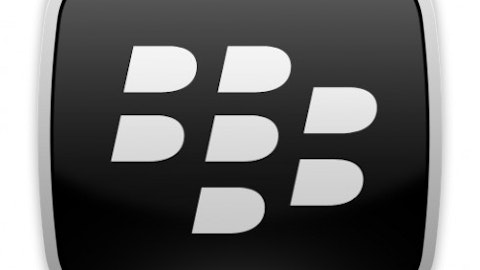The StressTest column appears every Thursday on Fool.com. Check back weekly, and follow @TMFStressTest on Twitter.
Stocks are cheap. No, really. They’re very, very cheap.
If you ask the right people, you’ll hear that stocks are cheap because the equity risk premium has skyrocketed. Just check out this nifty chart from the New York Federal Reserve Bank’s Liberty Street Economics blog.

Source: Liberty Street Economics.
“Now, back up a minute,” you may be saying. “What is this equity risk premium you speak of?”

When the equity risk premium is very low, stocks become less attractive because investors aren’t getting much additional returns for the additional risk they’re taking on by investing in stocks (remember, the alternative is “risk free”). On the other hand, when the equity risk premium is particularly high, it can be a fantastic time to invest in stocks because investors can expect a hefty helping of above-risk-free returns.
As the chart above shows, the folks at Liberty Street have concluded that we’re solidly in that latter situation right now:
The value of 5.4 percent for December 2012 is about as high as it’s ever been. The previous two peaks correspond to November 1974 and January 2009. Those were dicey times. … It is difficult to argue that we’re living in rosy times, but we are surely in better shape now than then.
Fair points about both 1974 and 2009. But dicey times or not, for both 1974 and 2009, stock market results over the next five to 10 years were pretty darn attractive.
And it’s not just the wonks at the Fed that care about this equity risk premium. When Appaloosa Management’s David Tepper went on CNBC earlier this week and got the whole market all hot and bothered, he waved around the above chart as part of his bullish thesis. And for those not familiar with Tepper, he’s no piker — Appaloosa manages around $18 billion.
So, cheap stocks, great news. Right?
It’s slightly more complicated than that. As outlined above, the equity risk premium is calculated in relation to the risk-free rate. We currently have a sky-high equity risk premium, that’s true. But at the same time, we have an absolutely rock-bottom risk-free rate — five-year Treasuries are yielding far less than 1%.
So, yes, investors can expect to see returns from stocks significantly outperform those of risk-free fixed income securities, but on an absolute-returns basis, the situation is very different from 1974 or 2009. Back then, stocks were actually cheap. According to Robert Shiller’s data, the cyclically adjusted P/E (the 10-year P/E, aka “CAPE”) dropped as low as 8.3 in 1974. In 2009, we saw a CAPE of 13.3. As of Shiller’s most recent numbers, the S&P’s CAPE is currently at 23.2.
To be clear, I’m not arguing that stocks are wildly overvalued. But it’s important to consider that some measures of stocks’ “cheapness” may not be what they seem. Warren Buffett has said that interest rates “act on financial valuations the way gravity acts on matter: The higher the rate, the greater the downward pull.” In the current rate environment, gravity is about as strong as it is on the moon.
I think there are stocks out there offering reasonable absolute return prospects. At Appaloosa, Tepper has some larger positions in financials like Citigroup Inc (NYSE:C) and MetLife Inc (NYSE:MET) — I see that in particular as a sector where deals are still available. The fund also has Apple Inc. (NASDAQ:AAPL) and General Motors Company (NYSE:GM) among its top 10 positions. In both of those cases, there’s also a solid value case to be made. After long avoiding Apple Inc. (NASDAQ:AAPL) myself, I added some to my portfolio earlier this year as the valuation simply looked too good to pass up. In short, even as Tepper professes a bullishness on the overall market, Appaloosa’s portfolio looks very selective and value driven.
The point is, there are opportunities, but it’s important to be choosy. And it will likely be even more important to be selective going forward. If the equity risk premium does start to converge with historical averages, it will most likely be for one of two reasons: interest rates are (finally) climbing, or stock valuations are rising. The latter in particular could make the market seem even more attractive in the short to medium term as prices push upward, but the move will only further squeeze potential future absolute returns.
So are stocks cheap after all? Sadly, as with so many other important questions, the answer depends a lot on how you define the question.
The article The Conundrum of Astonishingly Cheap Stocks originally appeared on Fool.com.
Matt Koppenheffer owns shares of Apple, but has no position in any of the other stocks mentioned. The Motley Fool recommends Apple and General Motors. The Motley Fool owns shares of Apple and Citigroup.
Copyright © 1995 – 2013 The Motley Fool, LLC. All rights reserved. The Motley Fool has a disclosure policy.


